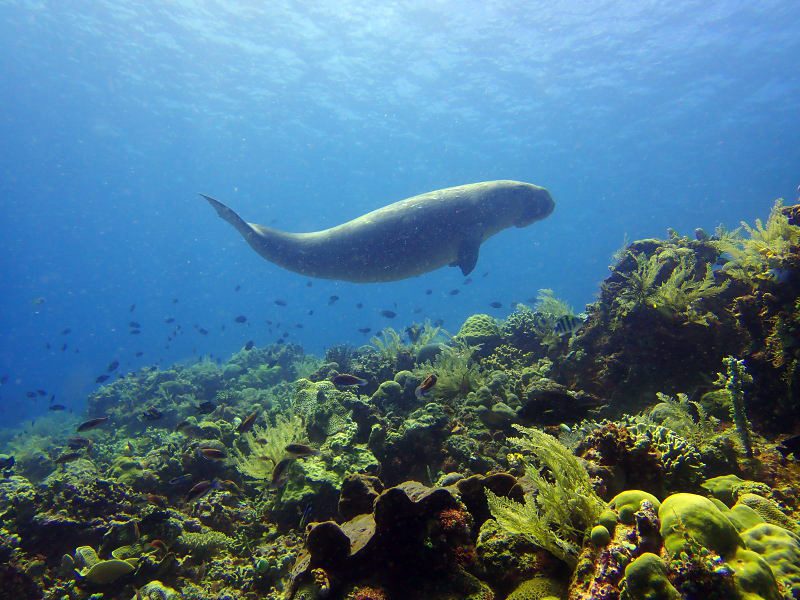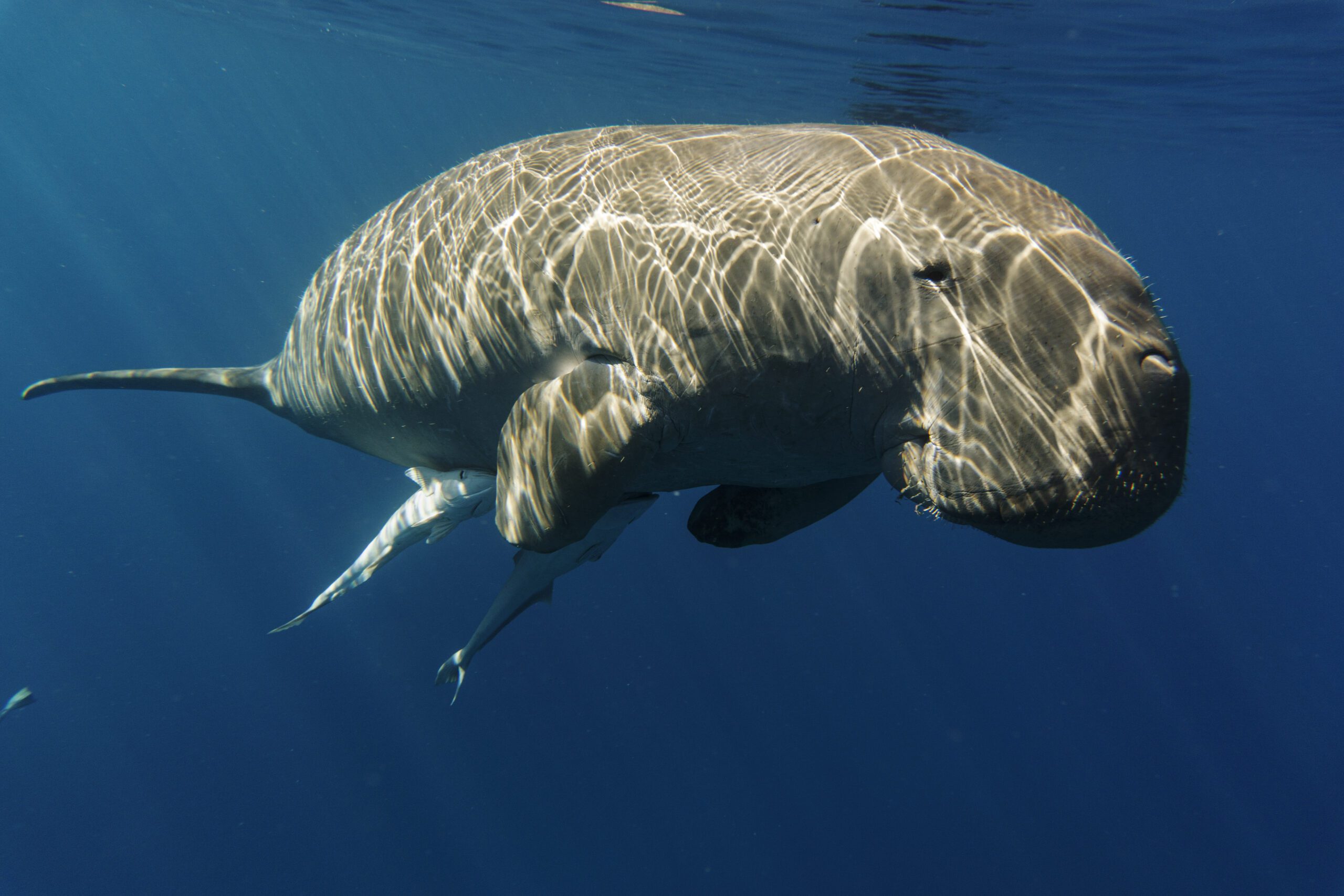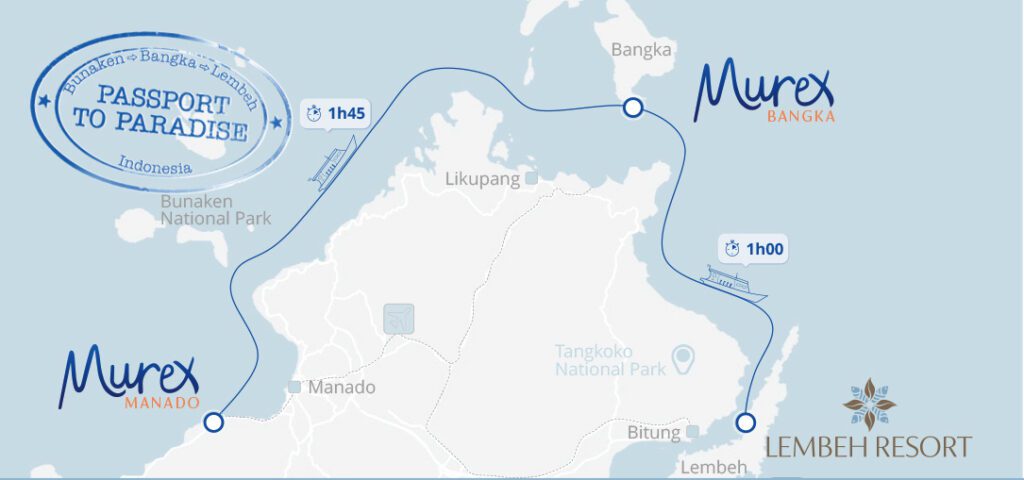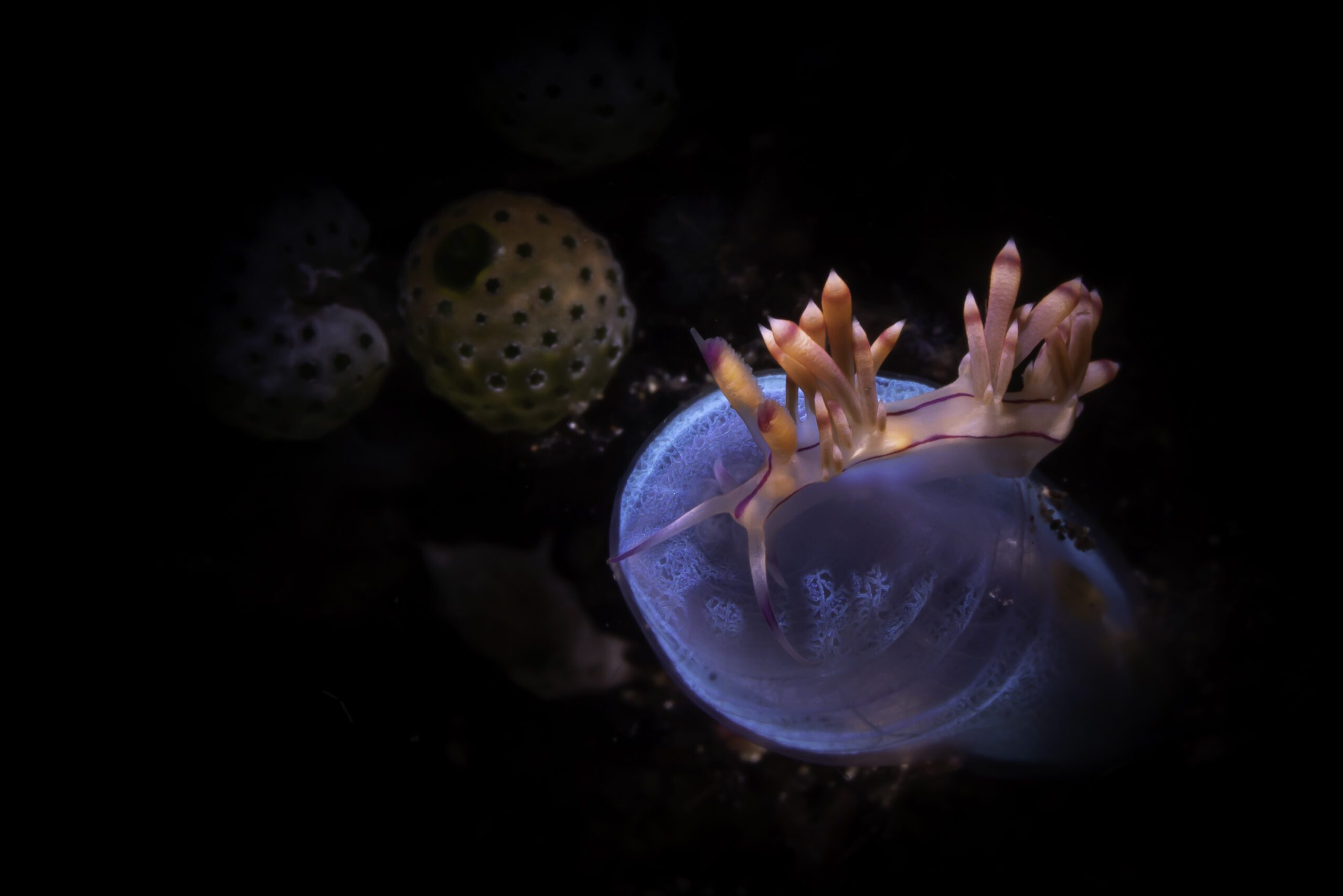
What is the Difference Between a Dugong and a Manatee?
Have you heard of an Indonesian Sea Cow or Dugong? Many divers are unfamiliar with these terms, but when looking through images, they recognize these strange-looking creatures as manatees. However, dugongs and manatees are two distinct species with several noticeable differences between them – dugongs are also a highlight of diving in North Sulawesi!
In this Blog we delve into the relationship between these two species and the key points of difference between a dugong and a manatee.
Species of the Order Sirenian
Both the dugong and manatees are marine mammals of the order Sirenian – a name that relates to legends of sailors believing them to be mermaids or sirens of the sea. Under the order Sirenian, there are 5 distinct species of which only 4 exist today. The 5th species, ‘Stella’s Sea Cow’ was hunted to extinction in the 18th Century. The 4 species found today are the West Indian Manatee (Trichechus manatus), the West African Manatee (Trichechus senegalensis), the Amazonian Manatee (Trichechus inunguis), and the Dugong (Dugongidae).
Comparing Dugongs to Manatees:
1. Size
When comparing dugongs to manatees the most striking difference is in their sizes. In general, manatees grow much heavier, broader, and longer than dugongs. Dugongs average a length of around 9.8 feet/3 meters whereas manatees have an average length of 11 feet/3.35 meters. The average weight of a dugong is between 551 and 1,984 pounds whereas manatees weigh between 880 to 1,210 pounds. The large bracket given for average weight is due to the significant differences between males and females. In both dugong and manatee species, the female species tends to weigh substantially more than her male counterparts.
2. Habitat and Geographical Distribution
Although both from the Sirenian Order, Dugongs, from the Dugongidae family, and Manatees from the Trichechidae family occupy very different parts of the planet. Dugongs are found in the Indo-West Pacific (including North Sulawesi) from the coasts of East Africa to the waters of Northern Australia. To see manatees, however, you’ll need to visit the Amazon Basin, the Caribbean, or the Gulf of Mexico!
It’s not just their global distribution that marks dugongs apart from manatees. They also occupy different habitats. While dugongs spend their lives entirely in salt water, manatees can be found in both salt and fresh water. Both species however are largely found in coastal regions which tend to be a good source of food – mangroves for the salt-dwelling dugong and sea grasses or river beds for manatees.
3. Snouts
In all Sirenians, the snout is one of the creatures most distinguishing characteristics, however, the finer details of the snout vary between manatees and dugongs. A manatee has a much shorter (and squashed-looking) snout than a dugong and manatee snouts also possess divided, prehensile lips.
Conversely, a dugong’s snout is longer than a manatees, resembling the trunk-like nose of an Aardvark. This long nose is not without purpose. It enables them to efficiently feed on seagrass growing on the sea floor.
4. Tails
While a dugong has a distinct fluked tail, similar to that of dolphins, manatees have a more rounded, paddle-shaped tail more like a beaver.
The differing tail shapes affect the way they move in the water. Dugongs, like dolphins, propel themselves by powerfully finning with their tail in an up and down motion, they are also lythe enough to be able to twist and quickly change direction. Manatees can only flap their tail up and down, making them slower and less agile.
5. Diet and Feeding
Both manatees and dugongs primarily feed on seagrass which they forage from the sea beds of their coastal habitats.
While dugongs are mainly herbivores, they will also feed on squid and octopus that they find while foraging. Manatees will feed on small fish in times when seagrass availability is low. While dugongs use their long noses to find and feed on seagrass because manatees have shorter snouts they also use their front ‘flippers’ to dig up seagrass from the roots.
6. Mating and Reproduction
Everyone loves a good love story and that’s what you get with dugongs! Dugongs are monogamous and mate for life. Only if one of the partners passes away will a dugong consider finding a new mate. Female dugongs reach sexual maturity at around 10 years old whereas female manatees reach maturity much younger, at just 3 years old. Manatees are polygamous and some males will have multiple female mates at the same time.

What do Dugongs and Manatees have in Common?
Dugongs and manatees both live long lives with a life expectancy of 65-70 years. They are also both excellent freedivers and can hold their breath underwater for up to 20 minutes if necessary. Dugongs and manatees also share another, more endearing, habit in how they sleep. To ensure they can breathe sufficiently, they sleep on the surface by flipping over on to their backs and looking very cosy floating in their ocean ‘beds’.
To learn more about these herbivorous wonders and their unique underwater world, dive deeper into our article “8 Facts About Dugong”.

Dugongs in North Sulawesi
Dugongs are found around Bangka Island, in the Bunaken Marine Park, and in the mangrove areas of the Manado Coastline. The best time to spot dugongs is early in the morning when they are actively foraging. As us for an early morning dive or snorkel trip if you’d like to try and spot one!
While spotting dugongs is never guaranteed, one of Murex’s guests has been lucky enough to encounter these gentle giants! Read the heartwarming story of one such encounter in our blog: Dugongs and Mermaids
More About Marine Life:
Dive deeper into our captivating features that showcase these underwater wonders. And discover the extraordinary creatures that inhabit North Sulawesi’s waters. Take a moment to explore our marine life features and expand your knowledge of this fascinating ecosystem.
Plan your diving adventure

Three distinct destinations brought together by Passport to Paradise
Go beyond the ordinary with “Passport to Paradise.” Witness the enchanting dance of dugongs, a spectacle found only in a handful of places on Earth.
Book your “Passport to Paradise” today and unlock the door to your ultimate North Sulawesi adventure, where unforgettable memories await in Bunaken, Bangka, and Lembeh. Click here to check Murex resort rates and embark on your own North Sulawesi adventure!




